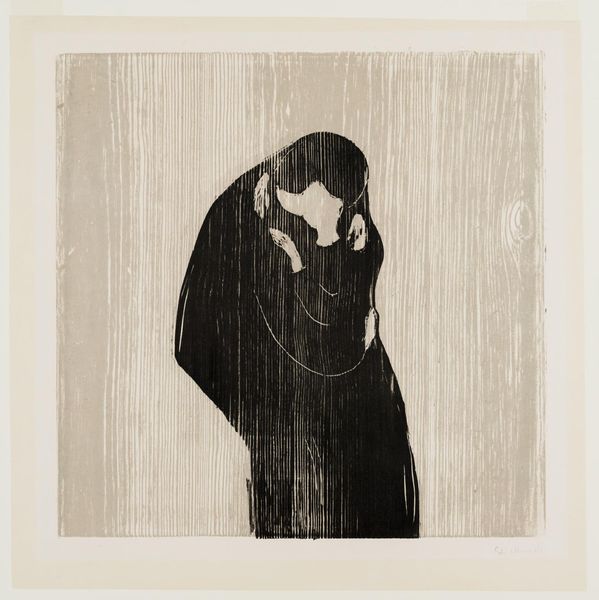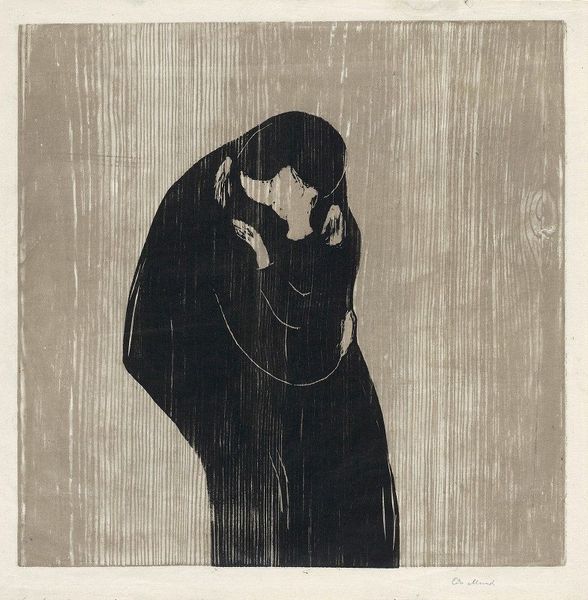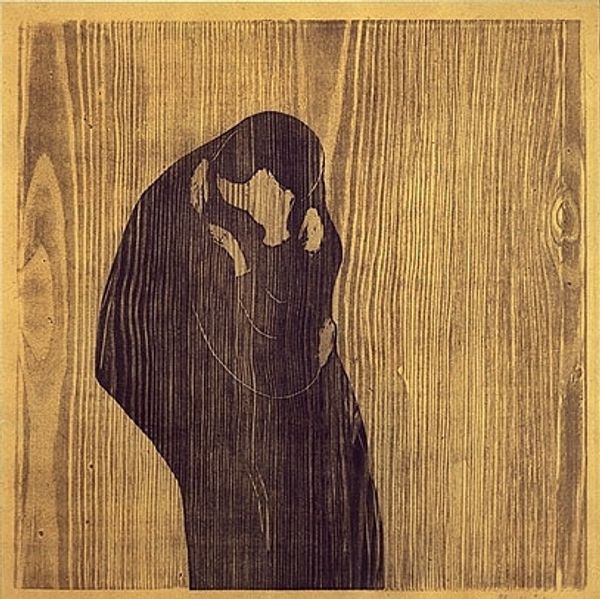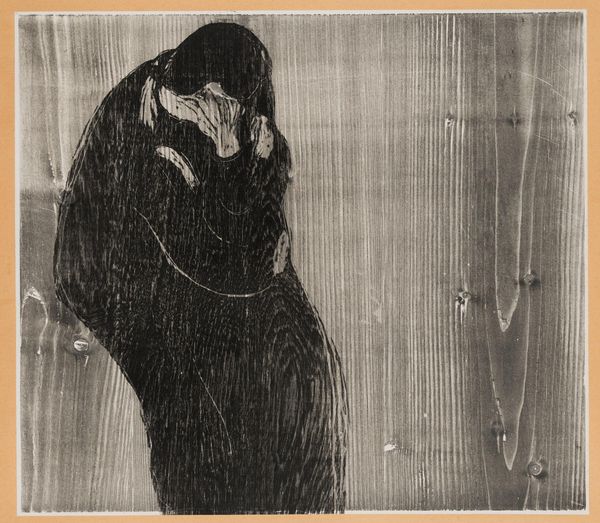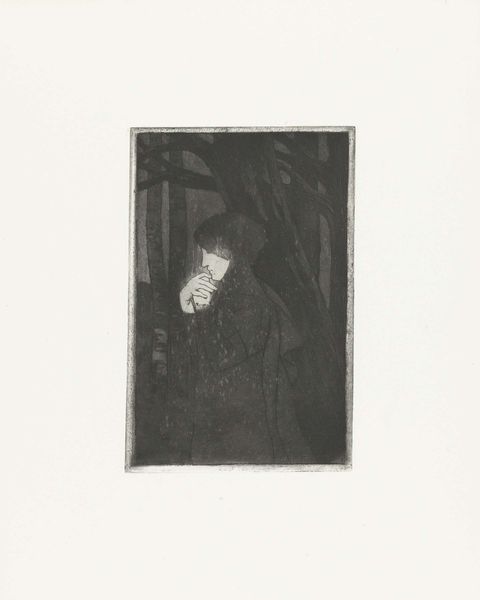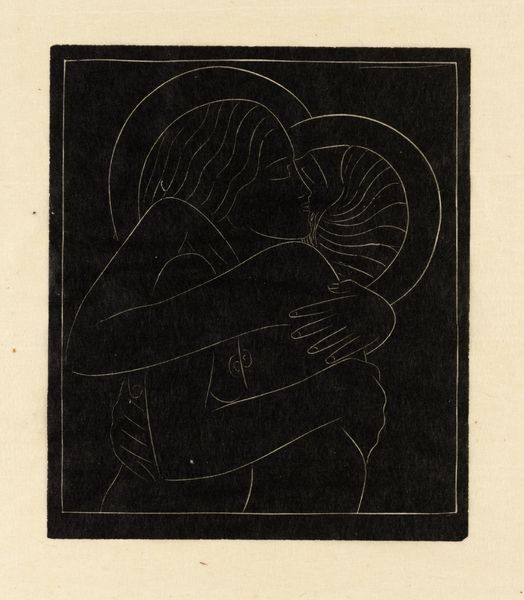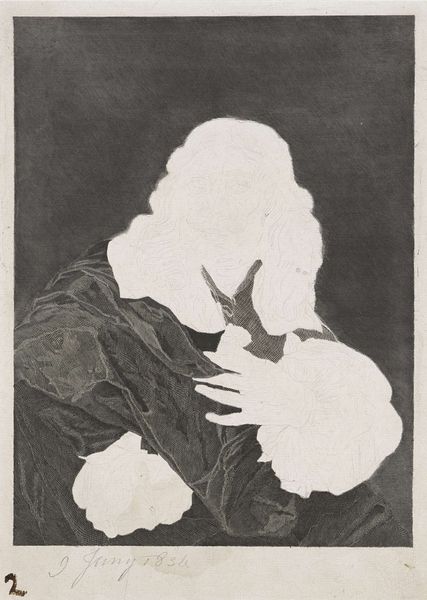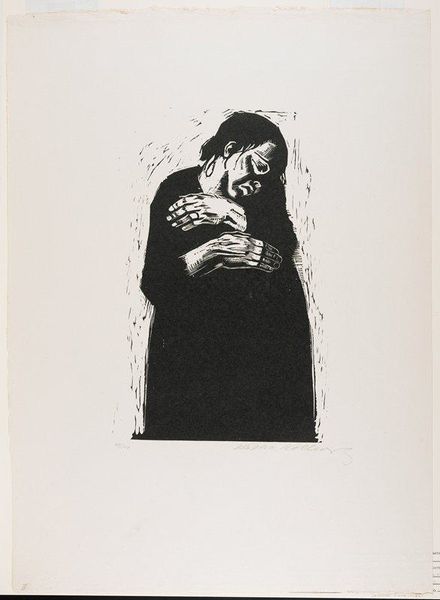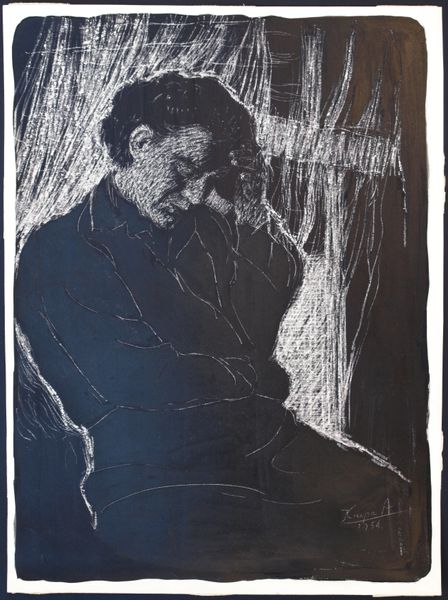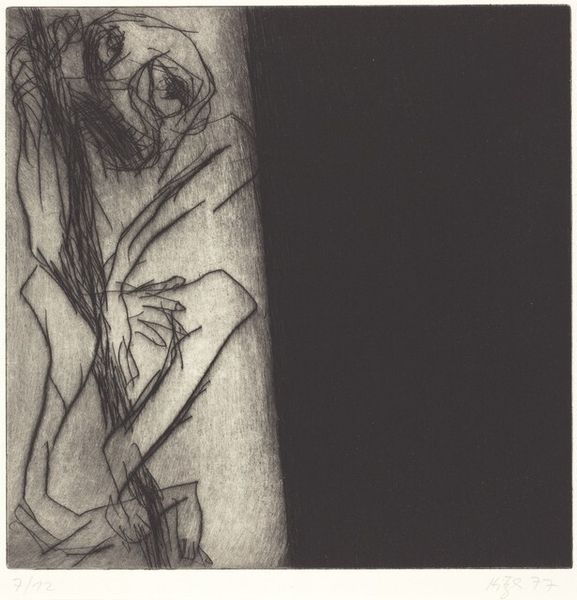
print, woodcut
#
portrait
# print
#
figuration
#
expressionism
#
woodcut
Dimensions: 18 3/8 x 18 1/4 in. (46.67 x 46.36 cm) (image)22 3/4 x 27 15/16 in. (57.79 x 70.96 cm) (sheet)
Copyright: No Copyright - United States
Editor: We're looking at "The Kiss IV," a woodcut made by Edvard Munch between 1902 and 1913, now at the Minneapolis Institute of Art. It’s so simple in its forms, just two figures embracing, yet it feels intensely private and claustrophobic at the same time. How do you interpret this work, considering Munch’s wider artistic project? Curator: Munch was deeply invested in representing interiority and the anxieties of modern life. "The Kiss," particularly in its woodcut form, becomes an exploration of the merging, almost dissolving, of individual identities within the confines of a relationship. Consider the backdrop: it resembles prison bars or perhaps even the planks of a coffin, reflecting not only intimacy, but the potential for confinement within the social expectations placed upon relationships, especially for women in that era. Editor: Confinement… I hadn’t thought of it that way. I was focusing on the tenderness in the figures’ embrace, but what you’re saying completely shifts the meaning. It is more than just an image of affection, right? Curator: Absolutely. The merging of the figures, rendered in such stark black and white, hints at the suppression of individuality. Look at the female figure; is she truly an equal participant in this embrace, or is she being consumed, literally enveloped, by the male figure and by the institution of marriage itself? Munch’s work frequently questioned conventional social structures. Do you see echoes of that questioning here? Editor: I do. The blurring of their faces makes it hard to distinguish them, symbolizing perhaps how societal expectations erase individual identity, particularly for women. It gives the print a powerful feminist edge. Curator: Exactly. Munch wasn’t simply depicting love; he was dissecting its potential pitfalls and its complex relationship with societal norms and gender dynamics. Editor: I definitely see "The Kiss" in a new light now – less romantic, more of a social commentary, which gives it so much more depth. Curator: Precisely. By understanding the sociopolitical context, we unlock deeper layers of meaning in what appears at first glance to be a simple image of intimacy.
Comments
minneapolisinstituteofart almost 2 years ago
⋮
The Kiss is a subject that Munch returned to several times from 1895 to 1902. He first explored the motif in a painting and an etching before embarking on this woodcut version, which stresses a more simplified, abstract composition. In this print, Munch cut the figures out of one block of wood, roughly gouging away the faces and hands. Over this he printed a piece of wood with a strong vertical grain in a light shade of grey, making it seem as if the kiss is as elemental as nature itself. The result is an image with a profound resonance, a timeless symbol of intimacy and unity.
Join the conversation
Join millions of artists and users on Artera today and experience the ultimate creative platform.
